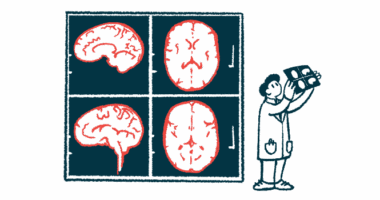Telehealth is a useful supplement to in-person appointments
It's made care more accessible, but some things just can't be done virtually

When my neuromyelitis optica spectrum disorder (NMOSD) was stable, I dreaded having annual medical checkups. They felt like an unnecessary hassle that required me to take time off work, fight downtown traffic, hunt for parking, and wait for an hour to see my specialist, only to learn that nothing had changed and I’d have to return the next year. Then the COVID-19 pandemic hit, and for a while, all of my appointments were scheduled virtually or over the phone.
Over the years, telehealth has become a useful tool for patients to manage their chronic conditions, offering remote consultations with both general practitioners and specialists. While it certainly has made healthcare more accessible, its effectiveness for NMOSD patients, in my opinion, is a mixed bag. Sometimes I find it’s a blessing, while other times it’s a challenge.
The benefits of telehealth
For those of us with NMOSD, mobility can be a serious challenge. When I had repeated flares over the last year, the pain made getting to doctor appointments difficult. Sitting in the car was uncomfortable because every bump or pothole had the potential to trigger a spasm. Optic neuritis attacks further complicated things, leaving me reliant on my husband to drive. While not all of my appointments were virtual, I deeply appreciated it when my healthcare providers agreed to them, which spared me the physical toll of traveling.
Trips to the hospital for appointments always make me nervous about getting an infection because I’ve been treated with an immunosuppressant therapy for 16 years. Public spaces are risky enough, but hospital waiting rooms, which are usually filled with sick patients, pose an even greater threat to me. Even a common cold has sent me to the emergency room before. Telehealth appointments offer a safer alternative and minimize these types of risks.
Top specialists and researchers are based in Toronto, where I live, as they are in many urban centers. But the sheer size of my hometown makes getting to appointments a challenge. I’m sure that’s the case in other large metropolitan cities, as well. It’ll sometimes take me up to an hour and a half to get to an appointment because of traffic. When my specialists agree to meet virtually, it saves valuable time and energy. When I was having flares, my specialists repeatedly included me in conference calls to discuss possible solutions.
For people in rural areas, telehealth appointments are even more helpful, since NMOSD specialists might not be accessible in person, or only at a great distance.
For me, one of the biggest benefits of telehealth is privacy. While I’m not the type to cry often, this past year of recurrent flares took a toll on my mental health. A few appointments with my social worker, psychologist, and neurologist caught me off guard. There’s nothing worse than leaving an appointment with a tear-streaked, puffy face. Thankfully, most of the interactions that hit me in the feels were virtual appointments.
The challenges for NMOSD patients
While I detest neurological exams, especially the pinprick test, I know they’re necessary. One major drawback of telehealth appointments is that they don’t allow for hands-on assessments. NMOSD symptoms can be unpredictable, either flaring up gradually or suddenly without warning. In the past year, I’ve struggled to distinguish between a new flare and the lingering effects from a previous one. A virtual appointment might facilitate a conversation about symptoms, but it lacks the depth of an in-person evaluation. As a result, there can be delays in identifying complications.
Managing NMOSD often involves complex treatment regimens that require careful monitoring. Adjusting treatments or addressing medication side effects might require lab tests, imaging, or direct physical assessments, all of which are difficult to coordinate via telehealth alone. In every instance where I’ve had severe pain, sudden weakness, or worsening symptoms, an in-person appointment or trip to the emergency room was unavoidable.
I also sometimes have to repeat blood tests, which I do a few floors below the office of one of my specialists. That convenience saves me from having to schedule an appointment or travel to an off-site clinic.
Not all doctors and patients are comfortable navigating telehealth platforms. It can be frustrating when technology doesn’t work because of a poor internet connection, faulty microphones, or bad phone reception. As someone who’s well-versed in technology, even I’ve sometimes struggled with virtual consultations when I’m experiencing vision impairment from NMOSD.
While telehealth appointments offer NMOSD patients undeniable convenience, I think they should be viewed as supplemental care rather than a replacement for traditional in-person appointments. But one thing that remains certain is that telehealth is here to stay, and as technology continues to improve, I think it’ll become easier for us patients to manage complex neurological disorders, including NMOSD.
Note: Neuromyelitis News is strictly a news and information website about the disease. It does not provide medical advice, diagnosis, or treatment. This content is not intended to be a substitute for professional medical advice, diagnosis, or treatment. Always seek the advice of your physician or other qualified health providers with any questions you may have regarding a medical condition. Never disregard professional medical advice or delay in seeking it because of something you have read on this website. The opinions expressed in this column are not those of Neuromyelitis News or its parent company, Bionews, and are intended to spark discussion about issues pertaining to neuromyelitis optica spectrum disorder.








Leave a comment
Fill in the required fields to post. Your email address will not be published.